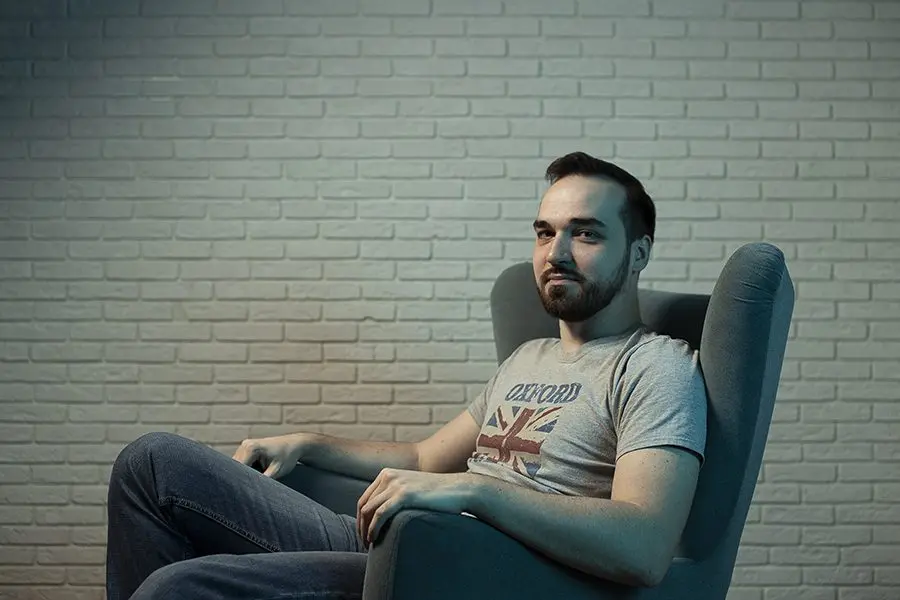How high technology helps to avoid unwanted side reactions to drugs, what do genes have to do with it and is it worth buying drugs with a prescription written by a neural network
About the expert: Mikhail Zastrozhin, Candidate of Medical Sciences, Head of the Laboratory of Genetics and Genomics of the Moscow Scientific and Practical Center for Narcology of the DZM, Associate Professor of the Department of Narcology of the RMANPO, CEO of the PGX2 project (Skolkovo biomedical cluster).
According to the US Food and Drug Administration (FDA), about 2 million serious adverse drug reactions are recorded annually in the US alone. 100-240 thousand of them are fatal. The occurrence of these reactions is influenced not only by the characteristics of a particular drug or the clinical and anamnestic characteristics of the patient (the severity of the course of the underlying disease, the presence of concomitant diseases, age, gender, bad habits), but also by its genetic characteristics, with which ordinary attending physicians are not familiar. For this, the patient is referred for a pharmacogenetic study.
Its results help to analyze and interpret the PGX2 bioinformatic cloud service.
What is this service and why is it needed
Simply: the service helps to estimate the metabolic rate of a particular patient. Based on these data, the doctor can select the appropriate dosage or type of drug to avoid negative side effects.
More difficult: exactly how drugs are converted and how quickly they are excreted from the human body (in other words, metabolized) largely depends on its genes. Some people have a high rate of drug metabolism, while others have a low rate. Proteins encoded by certain genes are responsible for this speed.
In people with a high metabolic rate the medicine at normal doses will not work. With the help of the service, the doctor can prescribe a different drug or an increased dose of the drug to such patients.
In people at low speed the medicine will accumulate, and the patient may have adverse reactions that are written in the instructions for the drugs: headache, nausea, sedation, and so on.
We identify patients who are genetically predisposed to adverse reactions for each specific drug, give them recommendations in accordance with Western guidelines (clinical recommendations), thus increasing the effectiveness and safety of therapy.
Why is it important
Simply: when a doctor communicates with a patient, it often turns out that the medications that he drank before did not help, or their intake was accompanied by headaches, gastrointestinal disorders and other undesirable side reactions. The doctor prescribes a new drug. It may happen that he will help. But time passes, the patient suffers, some complications may develop. This is a waste of time and quality of life for the patient.
More difficult: personalized medicine reduces the time it takes to find the right medicine at the right dose. But for this, a doctor who suspects that he has a patient with a high risk of low efficacy of therapy, or with a high risk of developing adverse reactions, must send him to pharmacogenetic testing. This is a study based on the results of which it is possible to evaluate the influence of the characteristics of specific genes on metabolism, on the effectiveness and safety of drugs. The data obtained is loaded into a special calculator. This is a kind of decision support system for specific drugs. This calculator uses all clinical and demographic data – age, gender, etc. and genetic data. Based on this, the program recommends a medicine and a dose.
For example: there are drugs with a narrow therapeutic interval: say, anticoagulants and antiplatelet agents (they prevent the formation of blood clots). This means that the optimal concentration of these drugs in the blood, when they can help and not harm, is difficult to achieve. Going higher beyond this “window” is fraught with undesirable reactions up to heavy bleeding, and lower – the formation of blood clots and complications associated with them.
Let’s say a person has undergone cardiac surgery: a mechanical prosthetic heart valve was placed. Such patients need to drink blood-thinning drugs for the rest of their lives so that a blood clot does not form on the new valve. And all of them must definitely carry out pharmacogenetic testing before prescribing the drug, otherwise complications and dangerous bleeding are possible.
What problems?
In the West today, anticoagulants and antiplatelet agents are often prescribed based on pharmacogenetic testing.
In our country pharmacogenetic testing is used less frequently. If the clinic does not have its own genetic laboratory, then the doctor can send a person to some network laboratory and ask him to be tested there.
But the problem is that there a bioinformatics service is created by a conditional bioinformatician who reads articles collected in various fields of medicine, and not by a clinician. For some drug, it will be said that with a 60-70% probability, adverse reactions will develop. Why? What is it based on? Unclear. You will have a report on a certain number of drugs that you can bring to the doctor, and he will ask: “What is this? What am I supposed to do about it?”
What is the right way then?
The model of evidence-based medicine is now used all over the world. Research is being done, guides are being developed. Practitioners use the recommendations from them to treat patients. These are not some subjective risks that are produced by a bioinformatics service, but specific recommendations. For each drug, the guides spell out how to adjust the dose of slow metabolizers, which fast metabolizers. In theory, the doctor could read all this and keep it in his head. But in fact, it is very difficult, and impossible, as practice shows.
The PGX2 service is based on evidence-based algorithms. It is made by a large team of scientists who live by these guides. Someone specializes in cardiology, someone specializes in psychiatry, allergology, and so on. In all areas there is a specialist who constantly works with these topics and monitors the relevance of the information in the service.

How the service works:
1. The patient himself comes to the laboratory at the insistence of the doctor, or they bring his biomaterials (hair, saliva). Specialists decipher the genetic code and enter information about the features of those genes that encode proteins into the service.
2. The service is based on an algorithm. It takes into account all the genetic information about the patient entered by the specialist – this is a list of the most common genes that can affect an individual drug response. Then the service “pulls up” the information from the guides, analyzes it all and issues a final report.
3. This report can already be read by a doctor: the algorithm itself paints drugs into groups, tells which drug and at what dose should be prescribed, and which should not, and why.
We approach each drug individually, based on evidence, updates of international guides, and all this information is processed by the service’s algorithms. We also plan to evaluate drug-drug interactions in the future. And we want to provide access to our service to network laboratories and laboratories at large clinics.
The problem is that now neural networks are not yet able to delve into all the nuances. Therefore, even if you take the coolest neural network, it, unfortunately, will not be able to analyze the data in the same way as a person does.
Now it is dangerous to trust this neural network: if a group of people drove these guides (as we do today), and based on them I would be prescribed therapy, I would agree. If they told me that it was done by a neural network, I myself would want to double-check what she wrote.
In practice: doctors have a very poor understanding of genetic testing.
Even if the doctor has “raw” test data in his hands, he will not be able to do anything with it. Therefore, doctors need to be more actively educated about the benefits of personalized medicine and pharmacogenetics as the main tool for personalization. To do this, for example, on the basis of the Russian Medical Academy of Continuous Professional Education of the Ministry of Health of our country and the Moscow Scientific and Practical Center for Narcology of the Moscow Health Department, specialized educational cycles of advanced training are conducted.
In practice: now in laboratories expensive and incomplete data.
If the doctor is aware of the importance of pharmacogenetic testing, he may refer the patient to the laboratory. But now a person will receive information about only one medicine for a lot of money – from 2 to 10 thousand rubles. So far, private laboratories provide only such services. Access to our service will allow laboratories to generate dosing recommendations not for one drug, but for a whole range of drugs, without changing the cost of the service.

In practice: Some clinicians are already aware of pharmacogenetic testing and its advantages over empiric therapy.
It depends on many factors: is there, for example, a clinical pharmacologist in a hospital, is it a private or public medical center. Clinical pharmacologists know that genes can influence the efficacy and safety of drugs, and they want sound advice. We are doing some work in this direction: for example, we give lectures at the RMANPE of the Ministry of Health of our country and other institutions.
In practice: at the legislative level, this is not regulated in any way.
But the demand for genetic services is growing, and Vladimir Putin announced that genetic passports of citizens will be created by 2025. So, legislation will be gradually formed in this area.
Perspective: to create genetic passports, it is necessary to completely decipher the genomes of all citizens – for each person this is 3 billion nucleotides.
All this information is recorded in a special file, and you can do something with it in the future. Who will decipher and for what means, I do not know. In Russian laboratories, whole genome sequencing costs about 90 thousand rubles. Thus, using the results of sequencing and advances in pharmacogenetics, it will be possible to select the most effective and safe therapy for each patient.
Perspective: development of telemedicine.
The same thing is happening with telemedicine now as with pharmacogenetic testing – this is not fully regulated by law. And although the law on telemedicine was adopted in 2018, in our country there is no infrastructure to work with this – there are only a few services.
For example, DocDoc, which entered the Sberbank ecosystem a couple of years ago: you call up a doctor, he advises you and gives you an official conclusion with a prescription. With him you can come to the clinic and get medicine.
But there are many technical problems: for example, the lack of access to broadband internet. In such conditions, it is difficult to talk about the development of telemedicine: the same project of the Unified State Health Information System is just an appointment with a doctor remotely.
Subscribe and follow us on Yandex.Zen — technology, innovation, economics, education and sharing in one channel.










